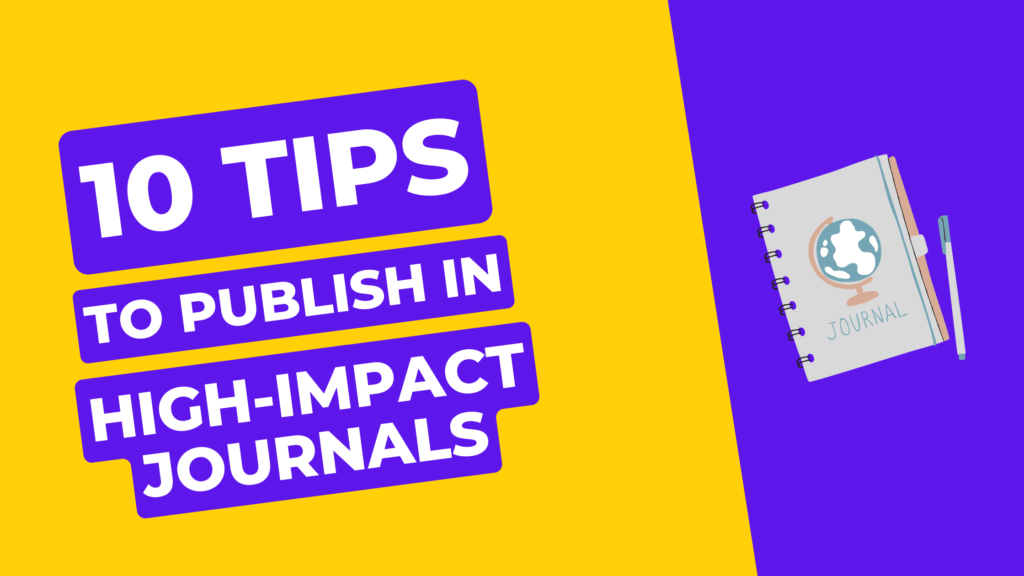
Are you struggling to get your manuscript accepted by high-impact journals? Submitting to these journals can be a highly competitive process and often requires careful planning and execution. In this post, we will provide you with 10 tips for getting your manuscript accepted in high-impact journals. From choosing the right journal to revising and polishing your manuscript, we will help guide you through the key steps that can make all the difference. Let’s take your manuscript to the next level and achieve success in your field.
1. Choose the right journal
In addition to considering impact factors and relevant journals in your field, take into account the aims and scope of the journal, the types of articles published, and the intended audience. For example, if your research is focused on a particular region, look for journals that specialize in that area to reach the right audience.
2. Review the submission guidelines
Carefully review the journal’s guidelines to ensure that your manuscript meets formatting and content requirements. Failing to adhere to the guidelines can result in your manuscript being rejected without review.
3. Focus on the novelty of your research
Clearly articulate the unique and innovative aspects of your research, and clearly explain how your findings contribute to the larger body of knowledge in your field. For example, describe how your approach to a problem, methodology, or data set expands upon previous research.
4. Consider the target audience
Tailor your writing to the intended readership of the journal. Identify the main questions or concerns that the readership may have regarding your research and address them in your manuscript.
5. Highlight the significance of your findings
Clearly explain the potential impact of your research on the field and beyond, and how it can lead to advances in the field or real-world applications. Emphasizing your research’s practical implications can make it more attractive to editors and reviewers.
6. Use clear and concise language
Avoid overly technical language and focus on clear and concise explanations of your research. This can help make your research accessible to a wider range of readers and improve its readability.
7. Provide ample supporting data
Use tables, figures, and graphics to present your data clearly and efficiently. This can help illustrate key points in your research and make it more engaging to readers.
8. Get feedback from peers
Share your manuscript with colleagues to get feedback and constructive criticism before submission. This can help identify weaknesses in your research and improve its quality.
9. Revise and polish your manuscript
Edit and revise your manuscript until it is of high quality and clearly articulates the novelty and impact of your research. Focus on polishing your writing, checking for grammatical errors, and fixing any inaccuracies in your data.
10. Be persistent
If your manuscript is rejected, use the feedback to improve it and submit it to other journals. Remember, rejection is a common part of the publishing process, and persistence is key to achieving success.
In conclusion, there are several key steps you can take to increase your chances of getting your manuscript accepted by high-impact journals. By selecting the appropriate journal, following submission guidelines, and clearly articulating the novelty and significance of your research, you can improve the quality and relevance of your manuscript. Additionally, incorporating feedback from peers and being persistent in the face of rejection can help increase your chances of success. By following these tips, you can help ensure that your research reaches a broader audience and has a greater impact in your field.
At Rasayely, our team of professional editors and proofreaders can help you with language editing and formatting, as well as provide guidance on selecting the right journal for your research. Contact us at submissions@rasayely.com to learn how we can help you with your manuscript and take one step closer to achieving your publication goals.
play youtube,
vvlx,
xporn,
xporn,
xnxx,
xxx,
down tiktok,
Connor Turnbull,
Stephanie Ruhle,
Luke Macfarlaneare Banks Closed Good Friday,
Super Mario Bros Number,
How Do I Free Up Space On My Iphone,
Box Score For World Series,
Aurura,
Usa Economy,
Netflix Premium,
Lookout Tower Paw Patrol,
How Many Belts Does Devin Haney Have,
Average Pornstar Salary,
Cso Criminal Search Bc,
